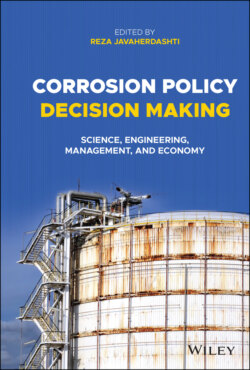Читать книгу Corrosion Policy Decision Making - Группа авторов - Страница 24
2.2.4 Mechanical Treatment
ОглавлениеPIG stands for Pipeline Inspection Gauge. Pigging is the act of running a PIG through a pipeline. The main aim of pigging from a CM point of view is not treating corrosion but somehow decreasing the likelihood of corrosion. Debris and scales formed within a pipeline are capable of facilitating the establishment of spots with differences in local partial oxygen pressure or concentration of chemical species. The former forms differential aeration electrochemical cells and the latter serve to form differential concentration electrochemical cells. In both cases, electrochemistry under the deposits will be highly likely to be leading to corrosion. Also, if temenos [5] (see footnote 1 in this chapter) forms, the corrosion products along with the temenos pieces can form deposits that would enhance the corrosive effects [6] of the deposits formed in this regards. This is when use of under‐deposit corrosion will make sense. Pigging will damage and destroy these deposits and scales and thus will decrease the likelihood of under‐deposit corrosion, by which these corrosion mechanisms may do detrimental effects on the mechanical integrity of the pipe.
Any action that will intervene with formation of deposits and establishing electrochemical cells by mechanical action can be grouped in this category. The deposits can be formed on the exterior of the asset, thus leading to external corrosion, or within the asset resulting in internal corrosion. Borrowing the terminology we have used in Chapter 3 to distinguish between corrosion control and corrosion prevention, mechanical measures can mostly be referred to as technologies to prevent corrosion by lowering the possibility of under‐deposit corrosion in the way we previously addressed.
